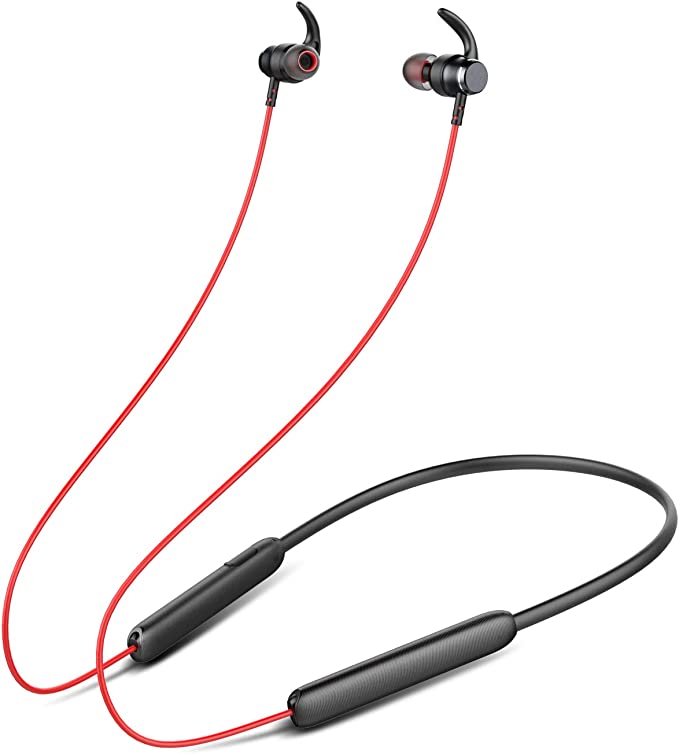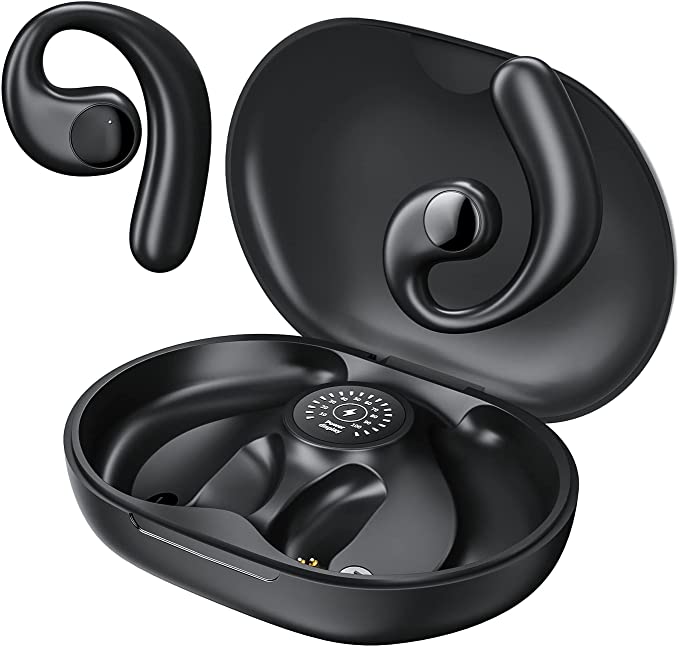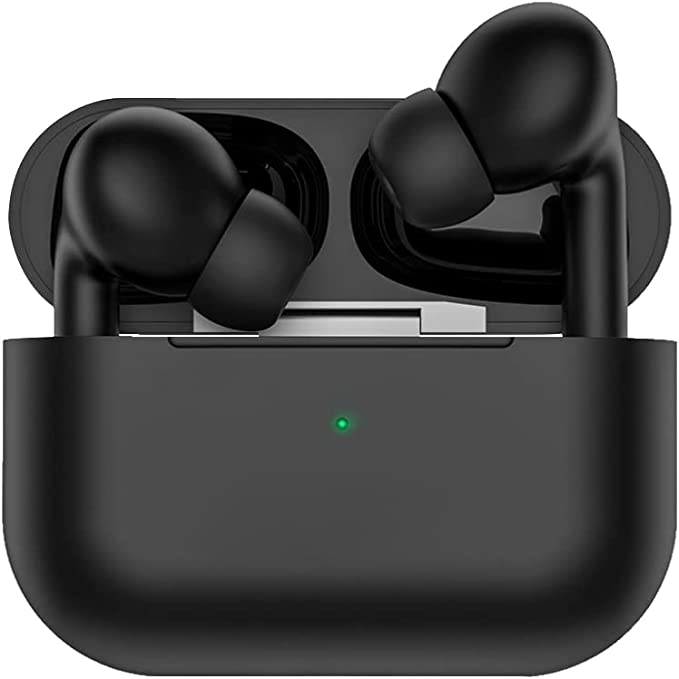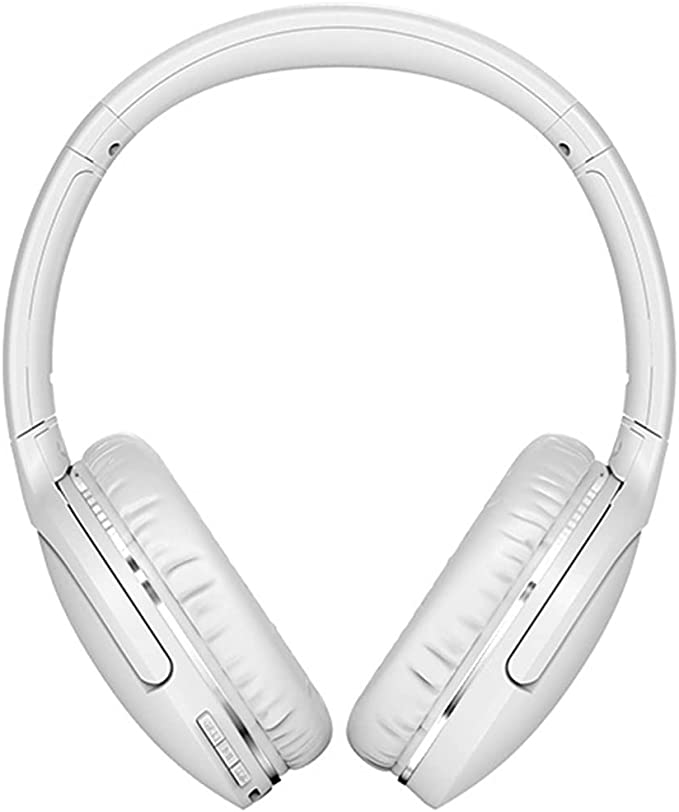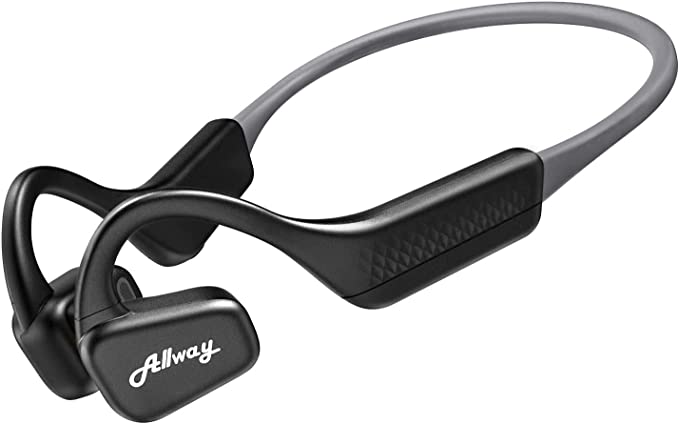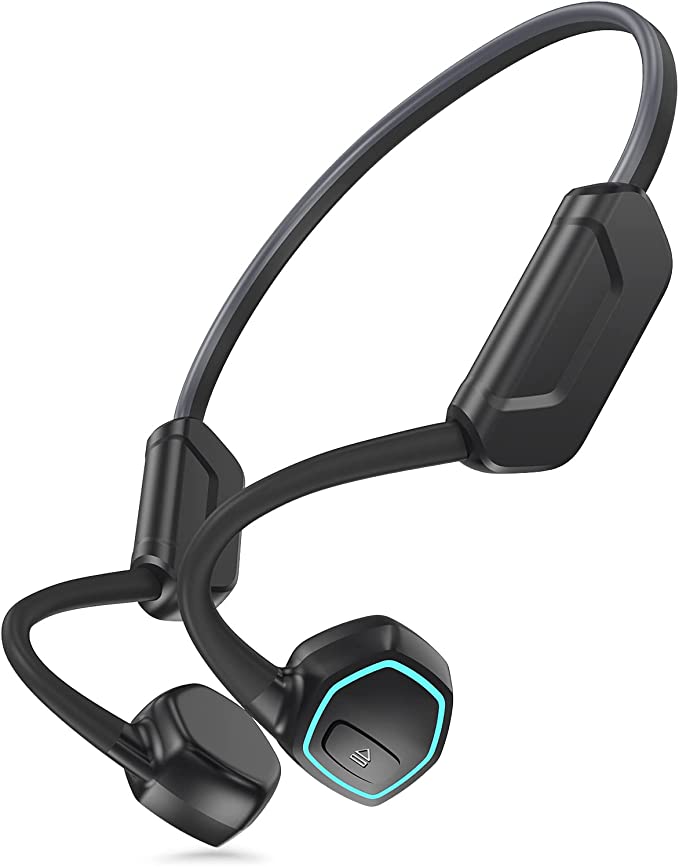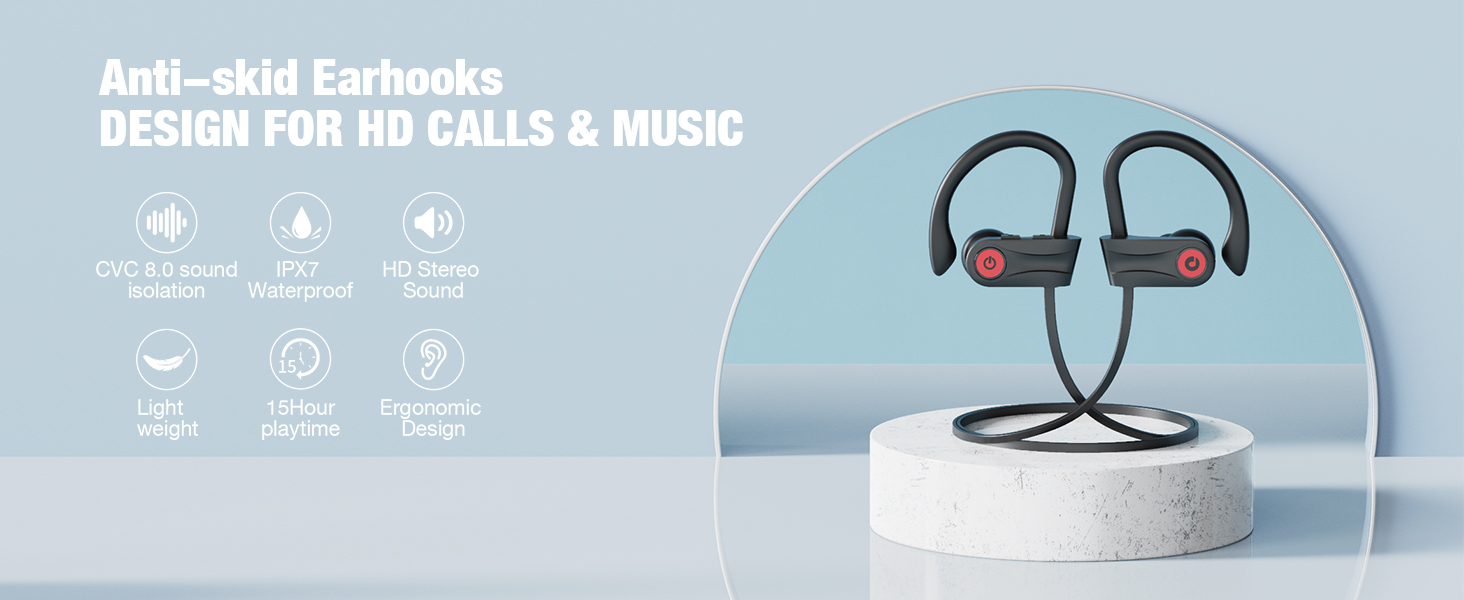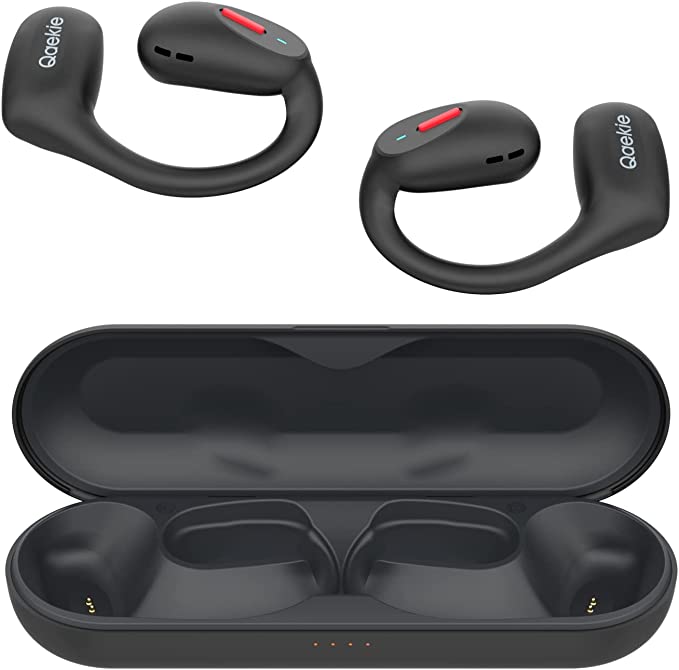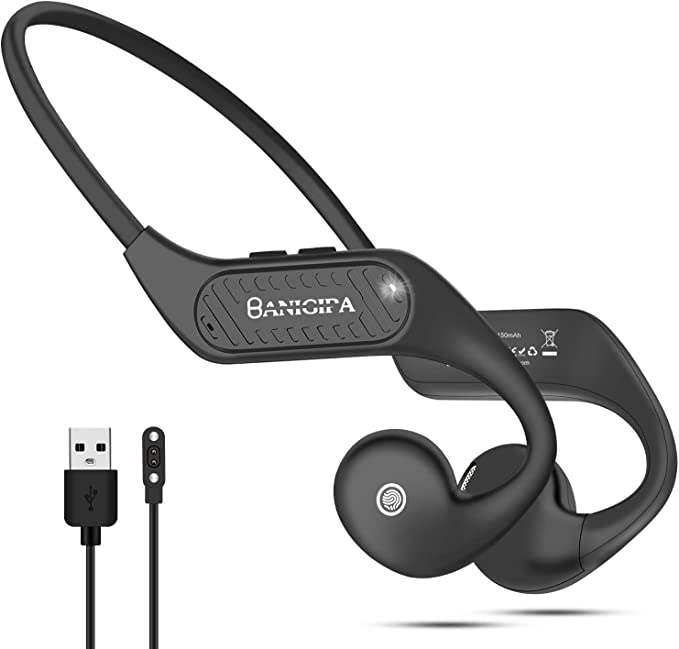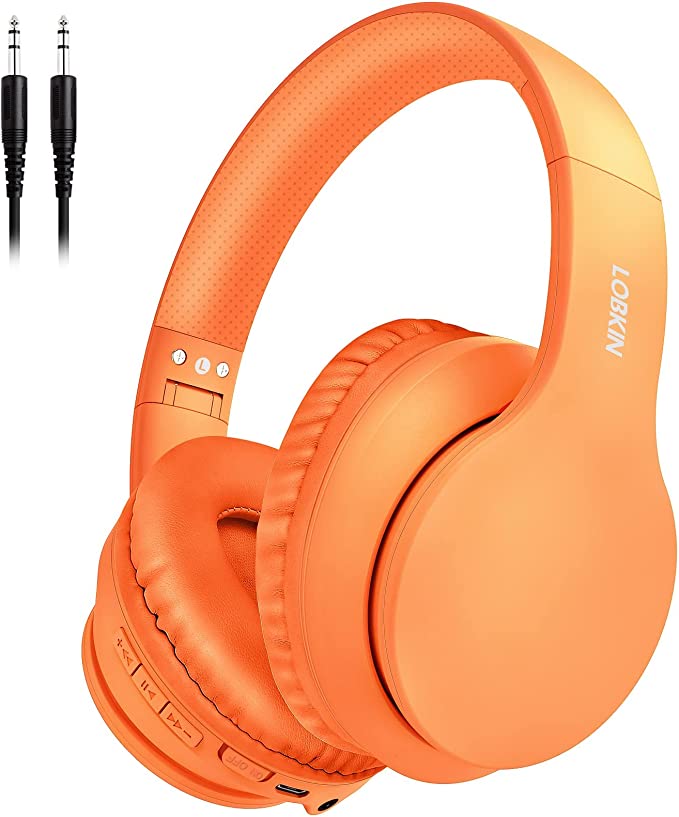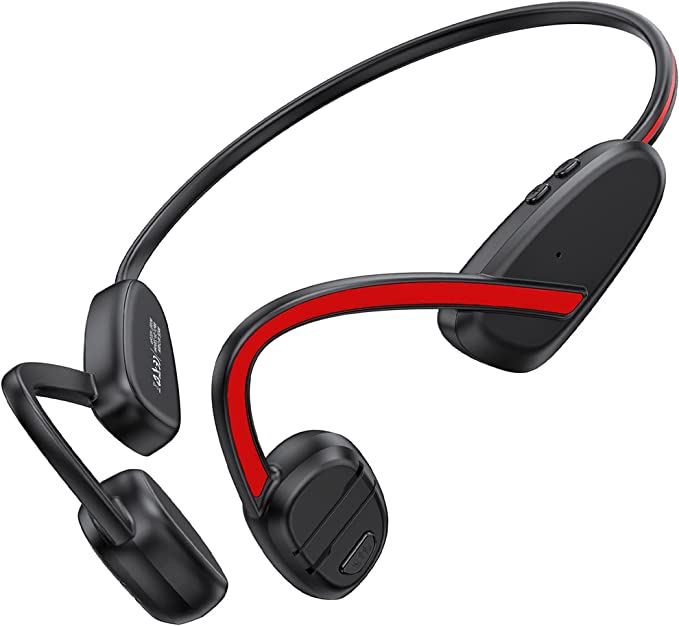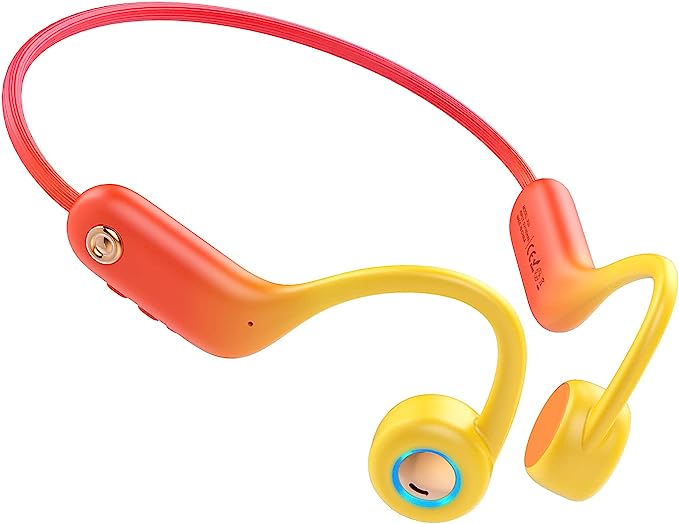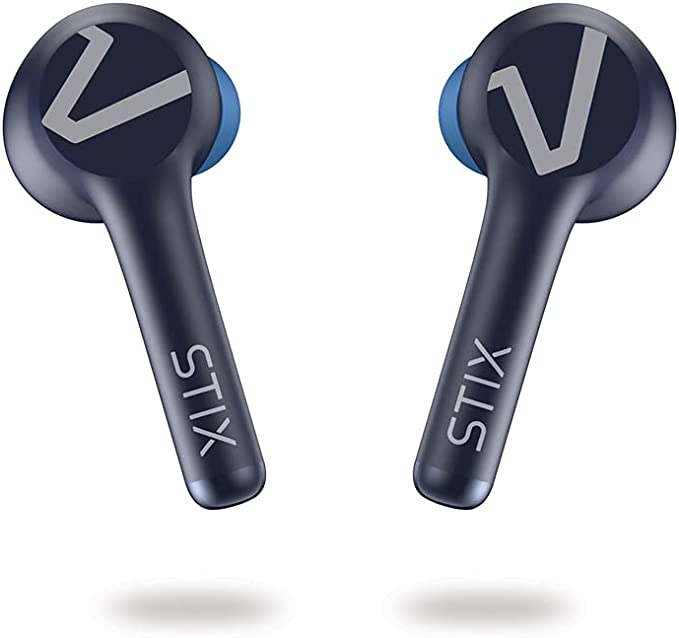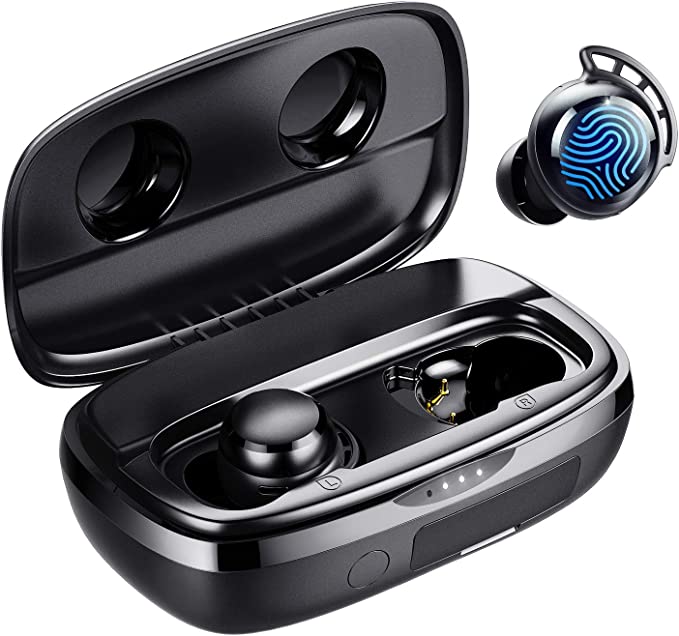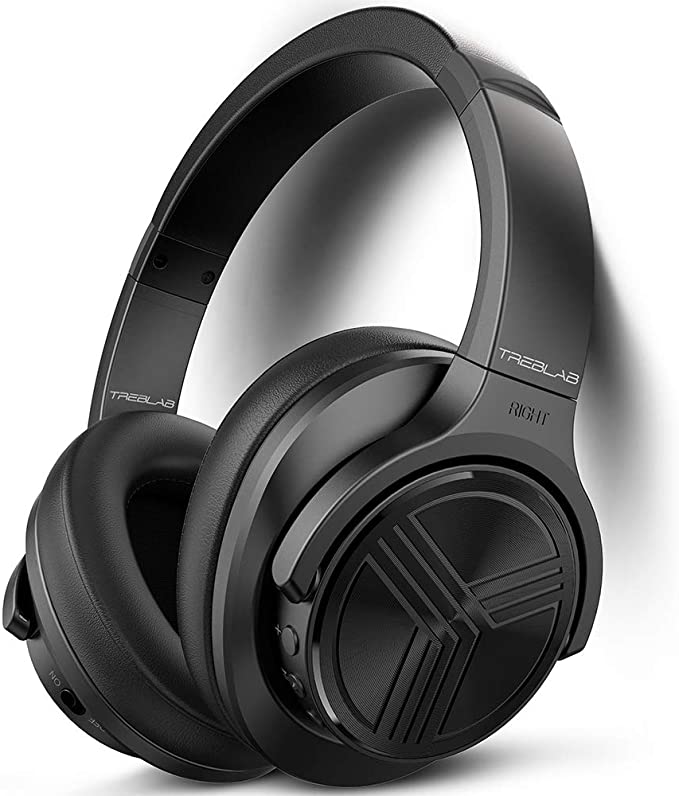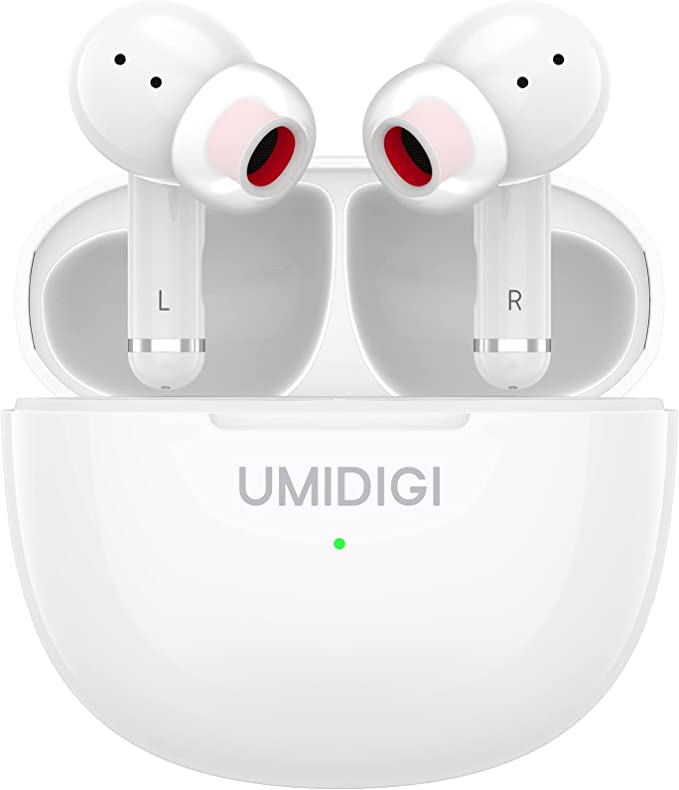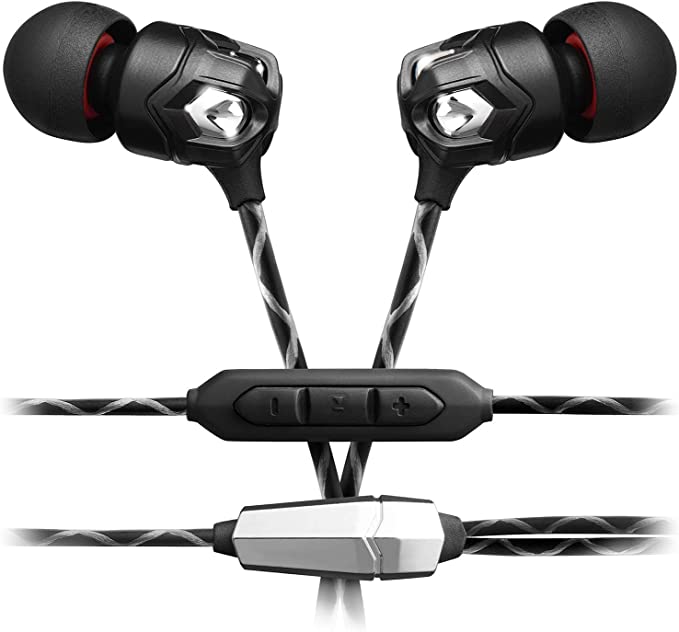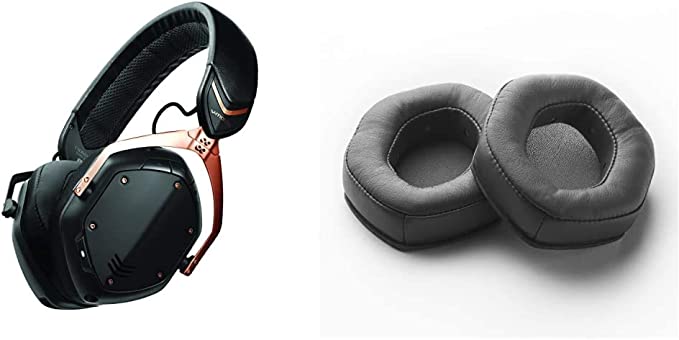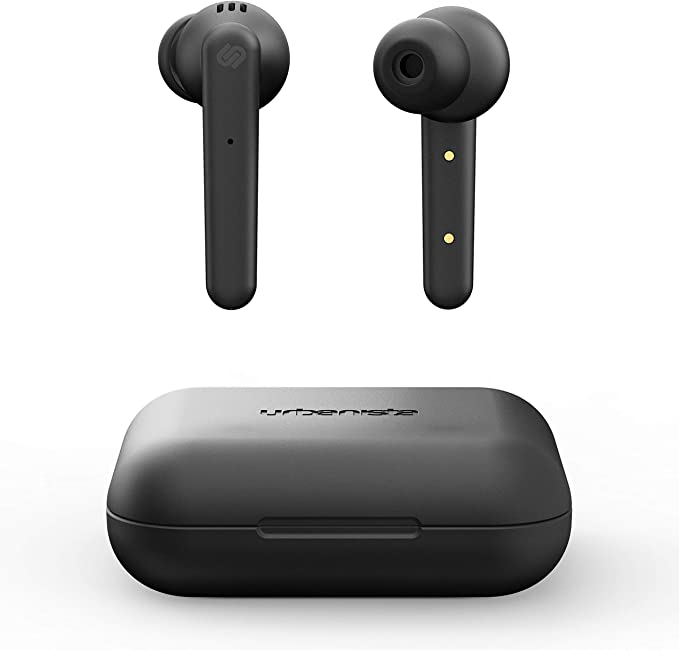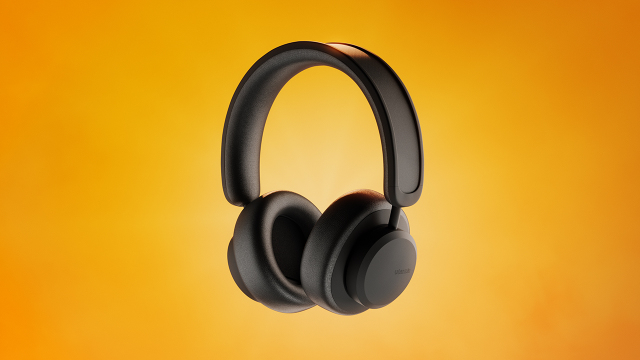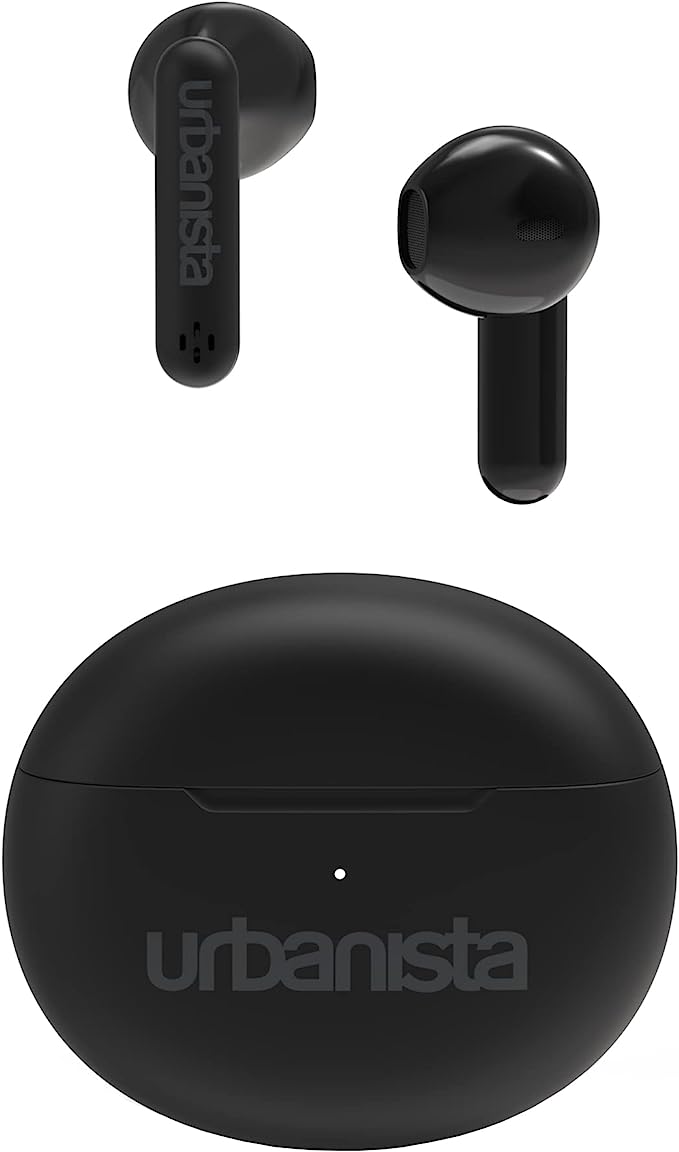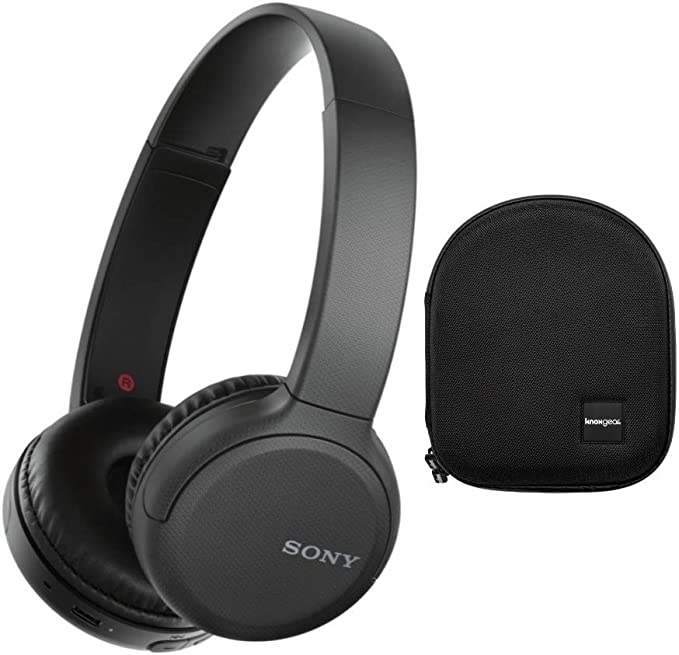MonAdd opwbuds: Experience Open-Ear Comfort & Stay Aware with Bluetooth 5.3
Update on April 14, 2025, 4 a.m.
We live immersed in sound, both the soundtracks we choose and the constant hum of the world around us. Yet, our personal audio choices often force a compromise. We crave the rich immersion that traditional earbuds provide, sinking deep into music or podcasts, but this often comes at the cost of feeling sealed off, isolated from important environmental cues. Then there’s the comfort factor; for many, the pressure or occlusion of in-ear devices becomes fatiguing, even painful, over time. What if there was a different way to listen, a path that embraces connection rather than isolation? This is the promise of open-ear audio, a fascinating category where designs like the MonAdd opwbuds Open Ear Wireless Headphones attempt to rewrite the listening experience. Let’s explore the science, the design, and the inherent trade-offs behind this approach.

Hearing Differently: The Science of Air Conduction Unveiled
Most earbuds you encounter function like tiny speakers sealing your ear canal. They direct sound waves almost exclusively towards your eardrum, maximizing audio intensity and blocking external noise. This creates that coveted sense of isolation, excellent for focused listening but potentially hazardous when awareness is needed.
Open-ear headphones, including clip-on types like the opwbuds, operate on a fundamentally different principle: air conduction, but without the seal. Instead of plugging the ear canal, small speakers are positioned near the canal’s entrance. Sound waves travel through the air, entering your ear naturally, much like how you hear someone speaking across the room or birds singing outside. Think of it like listening to music in your room with the window open versus having it sealed shut. With the window open (open-ear), the music mixes with the sounds from outside; with it closed (traditional earbuds), you primarily hear only what’s playing inside.
This open approach has profound acoustic consequences. Firstly, bass perception often changes. Deep bass frequencies carry significant energy, and without a seal to trap that energy within the ear canal, some of it inevitably dissipates into the surrounding air. This can result in a bass response that feels less impactful or deep compared to sealed designs – a physical limitation inherent to the open format. Secondly, sound leakage is a factor. Just as sound from the outside can get in, sound from the headphones can get out, potentially audible to those nearby in quiet environments. Thirdly, the sense of soundstage – the perceived space and location of instruments – can feel more natural and expansive, less “in your head,” as the sound interacts more naturally with your outer ear (pinna) before entering the canal.
Furthermore, our brains are remarkably adept at processing multiple sound sources. With open-ear designs, you’re dealing with both the direct audio feed and the ambient sounds of your environment. This interplay, sometimes involving the “masking effect” where louder sounds can obscure quieter ones, shapes the overall listening experience in a way unique to open designs.

The Gentle Grip: Ergonomics and the Clip-On Challenge
Beyond the sound itself, how a device feels is paramount. The MonAdd opwbuds employ a clip-on form factor, designed to hang onto the ear’s cartilage (specifically, the helix or antihelix, depending on placement) rather than entering the canal. The product description mentions using “high-quality memory silicone,” a material known for its flexibility, softness, and ability to conform to shapes, potentially offering a gentle yet secure grip. The aim, as stated, is a “no feeling” experience, minimizing pressure points often associated with in-ear buds.
However, the human ear is a landscape of incredible diversity. No two ears are identical in shape, size, or cartilage rigidity. This presents a significant ergonomic challenge for any device designed to clip onto it. While the silicone might offer some adaptability, achieving a universally secure and comfortable fit with a clip-on design is inherently difficult. This reality is reflected, albeit indirectly, in the available user feedback for the opwbuds: a comfort rating of 3.6 out of 5, with individual reviews mentioning both that they “stay on my ears” well during exercise and that they are “hard to keep on your ear.” This isn’t necessarily a flaw in the product itself, but rather highlights the complex interaction between a fixed design and variable human anatomy. Finding the ‘sweet spot’ for both comfort and stability might require experimentation for each user.

Welcoming the World: The Power of Situational Awareness
Perhaps the most compelling reason to consider open-ear headphones is the undiluted access they provide to your surroundings. This situational awareness isn’t just a feature; it’s arguably the core value proposition. Imagine jogging down a city street – with open ears, the approaching siren, the unseen bicycle, the friendly greeting from a neighbor are all clearly audible alongside your playlist. Contrast this with the potential danger of being completely oblivious while sealed off by traditional buds.
This benefit extends far beyond exercise. In an office environment, you can listen to background music or a podcast while still hearing a colleague’s question or the phone ringing. For parents or caregivers, it means keeping an ear out for children or dependents while enjoying personal audio. It’s about maintaining a crucial connection to the immediate environment, enhancing personal safety, and facilitating social interaction without constantly having to remove your headphones. In a world demanding constant multitasking and environmental vigilance, this ability to seamlessly blend personal audio with ambient reality holds significant appeal.

The Unseen Connection: What Bluetooth 5.3 Really Offers
Reliable wireless connectivity is the lifeblood of modern earbuds. The MonAdd opwbuds feature Bluetooth 5.3. While version numbers can seem like mere marketing, Bluetooth 5.3 does offer tangible, albeit incremental, improvements over its predecessors like 5.0 or 5.2 (based on general knowledge of the standard, not specific product testing). Key advancements often include:
- Enhanced Connection Stability: Technologies within the 5.3 standard aim to reduce interference and maintain more robust connections, meaning potentially fewer frustrating audio dropouts or stutters, especially in crowded wireless environments.
- Improved Power Efficiency: Bluetooth 5.3 allows devices to operate more efficiently, potentially leading to longer battery life from the earbuds themselves on a single charge, contributing to the overall claimed playtime.
- Faster Pairing & Lower Latency (Potentially): While not guaranteed by the standard alone (implementation matters), BT 5.3 can facilitate quicker initial pairing and potentially lower audio lag, which is beneficial for watching videos or casual gaming.
These under-the-hood improvements translate to a smoother, more reliable day-to-day listening experience.

Life’s Soundtrack: Practicalities and Design Notes
Rounding out the opwbuds’ feature set are several practical considerations. A total 30 hours of playtime with the included charging case is respectable, offering multi-day use for many. The case itself supports wireless charging, adding convenience, and fast charging is mentioned, though the specifics (e.g., charge time for X hours of playback) aren’t provided. A built-in microphone allows for calls, although the open design might mean the microphone picks up more ambient noise compared to sealed earbuds with advanced noise-canceling mic arrays – a reasonable inference given the physics involved. Simple media controls are integrated for managing playback and calls.
The description also notes the earbuds are “Sweatproof,” essential for workouts. However, the lack of a specific IP (Ingress Protection) rating is a notable omission. Is it resistant to light sweat, heavy rain, or accidental splashes? Without an IP rating (like IPX4 or higher), the actual level of water resistance remains ambiguous.
Finally, the claim that the design makes it “a beautiful earring or other beautiful decoration” leans into subjective aesthetics. The clip-on form factor is certainly distinct, but whether it achieves ‘beauty’ is entirely in the eye of the beholder.

The Listener’s Choice: Weighing the Open-Ear Equation
So, who are open-ear clip-on headphones like the MonAdd opwbuds truly for? Understanding the inherent trade-offs is key.
The Gains:
- Unparalleled Situational Awareness: The primary benefit, crucial for safety and staying connected.
- Potential Comfort: For those sensitive to ear canal pressure, the non-invasive design might offer superior long-term comfort.
The Compromises:
- Audio Fidelity Trade-offs: Expect a less impactful bass response and potential sound leakage compared to sealed designs. Overall sound quality might not satisfy audiophiles (reflected in the 3.6 user rating for sound quality).
- Inconsistent Fit/Stability: The clip-on style may not be secure or comfortable for all ear shapes.
- No Noise Isolation: They are designed not to block external noise, making them less suitable for noisy environments or when focus is paramount.
Therefore, these headphones are most likely to appeal to individuals who heavily prioritize environmental awareness (runners, cyclists, pedestrians, certain professionals) and those who find traditional earbuds physically uncomfortable. If your main goal is the absolute best sound quality or blocking out the world, other types of headphones would likely be a better fit.

Concluding Thoughts: An Invitation to Listen Differently
The MonAdd opwbuds, despite being currently unavailable on the platform where this information was found, serve as a valuable case study in the evolving landscape of personal audio. They represent the open-ear philosophy: the idea that listening to our chosen content doesn’t have to mean shutting ourselves off from the world. This approach involves clear scientific principles and results in a distinct set of advantages and disadvantages.
There is no single “perfect” headphone, only the one that best aligns with an individual’s needs, priorities, and tolerance for compromise. Open-ear audio, in its various forms, offers a compelling alternative for those seeking awareness and potentially greater comfort. It’s an invitation to listen differently, to find a personal audio solution that harmonizes with, rather than isolates from, the rich sonic tapestry of everyday life. Understanding the science behind the sound allows us to make that choice more consciously.

